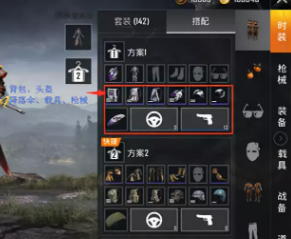digital currencies to invest in, See results about
Traditional industries in Northeast China, such as industry and agriculture, occupy an important position in the economy. Unmanned technology can inject new vitality into traditional industries. In industrial production, unmanned forklifts can improve the efficiency of cargo handling, and drones can be used for safety inspection of factories. In agriculture, in addition to the previously mentioned UAV plant protection operations, unmanned irrigation systems can also be used to improve irrigation efficiency. These applications are helpful to improve the production efficiency and competitiveness of traditional industries in Northeast China and make traditional industries better adapt to the requirements of modern markets.1. Technology adapts to the challenges of the special environment in Northeast China.First, the vigorous trend and unique charm of unmanned technology
Traditional industries in Northeast China, such as industry and agriculture, occupy an important position in the economy. Unmanned technology can inject new vitality into traditional industries. In industrial production, unmanned forklifts can improve the efficiency of cargo handling, and drones can be used for safety inspection of factories. In agriculture, in addition to the previously mentioned UAV plant protection operations, unmanned irrigation systems can also be used to improve irrigation efficiency. These applications are helpful to improve the production efficiency and competitiveness of traditional industries in Northeast China and make traditional industries better adapt to the requirements of modern markets.UAV has become an indispensable scientific and technological force in modern society. In agriculture, as an important agricultural producing area in China, the application prospect of UAV is broad. It can carry out accurate pesticide spraying and crop growth monitoring. For example, in a large paddy field in Northeast China, drones can spray pesticides evenly according to the set route. Compared with traditional manual spraying, it is not only more efficient, but also can reduce pesticide waste and improve the quality of agricultural products. According to the statistics of agricultural departments, using drones for plant protection operations can improve the efficiency by 5-10 times compared with traditional methods. In the field of geographic mapping, UAV can quickly obtain detailed data of complex terrain in Northeast China, and provide accurate maps and data support for urban planning, resource exploration and other work.2. Shortcomings of market cognition and talent reserve
Driverless technology is gradually maturing. For Northeast China, its vast area and cold climate have special requirements for transportation. Driverless technology can be applied to logistics and transportation. In the long winter in Northeast China, the road conditions are complex and changeable. Driverless trucks can reduce the risks caused by driver fatigue and misjudgment of road conditions. At the same time, in urban traffic, the promotion of driverless cars can optimize traffic flow and reduce congestion. For example, in some big cities in Northeast China, such as Harbin and Shenyang, traffic congestion affects the efficiency of economic operation to a certain extent, and driverless technology is expected to improve this situation.1. Coping with the problem of population loss and labor costNortheast China is facing the problem of population loss in recent years. Although the labor cost has been relatively reduced, the shortage of labor still exists in some industries. The application of unmanned technology can make up for the shortage of manpower to some extent. For example, in some remote forest areas or mining areas, drones can carry out security patrols, environmental monitoring and other work to reduce dependence on manpower. Unmanned shops and banks can be laid out in towns with relatively small population and provide basic commercial and financial services without a lot of human support.
Strategy guide
12-13
Strategy guide 12-13
Strategy guide
12-13
Strategy guide 12-13
Strategy guide
12-13
































